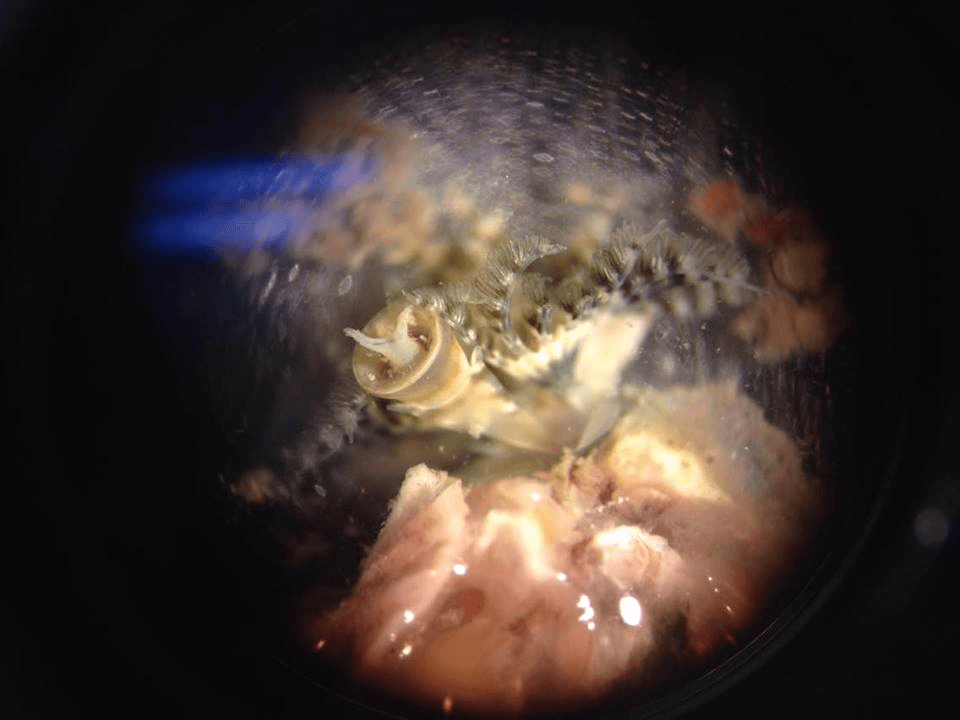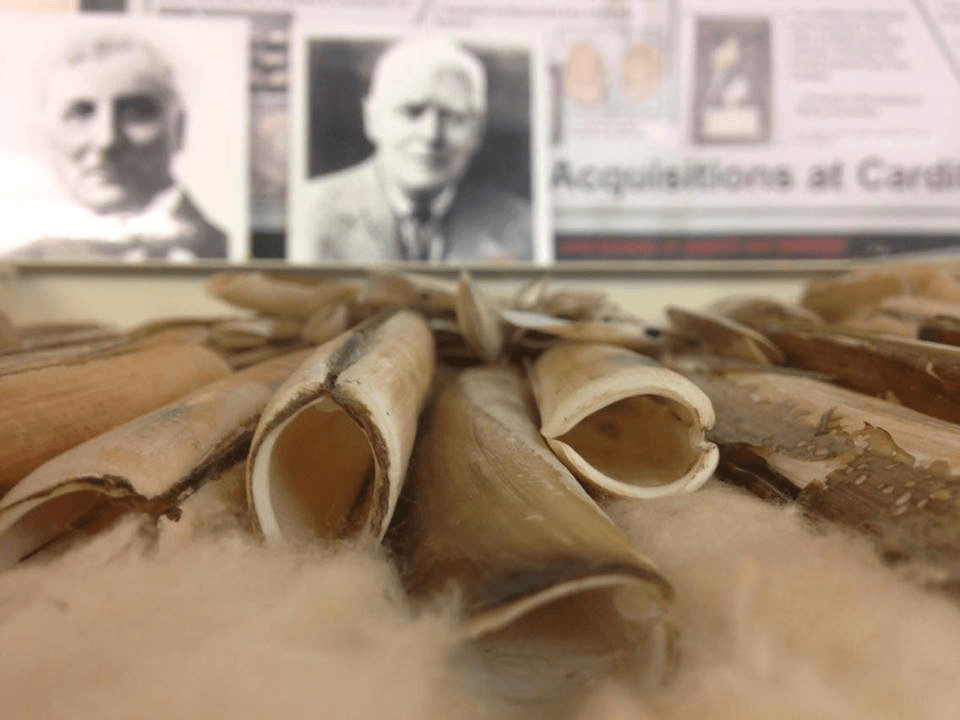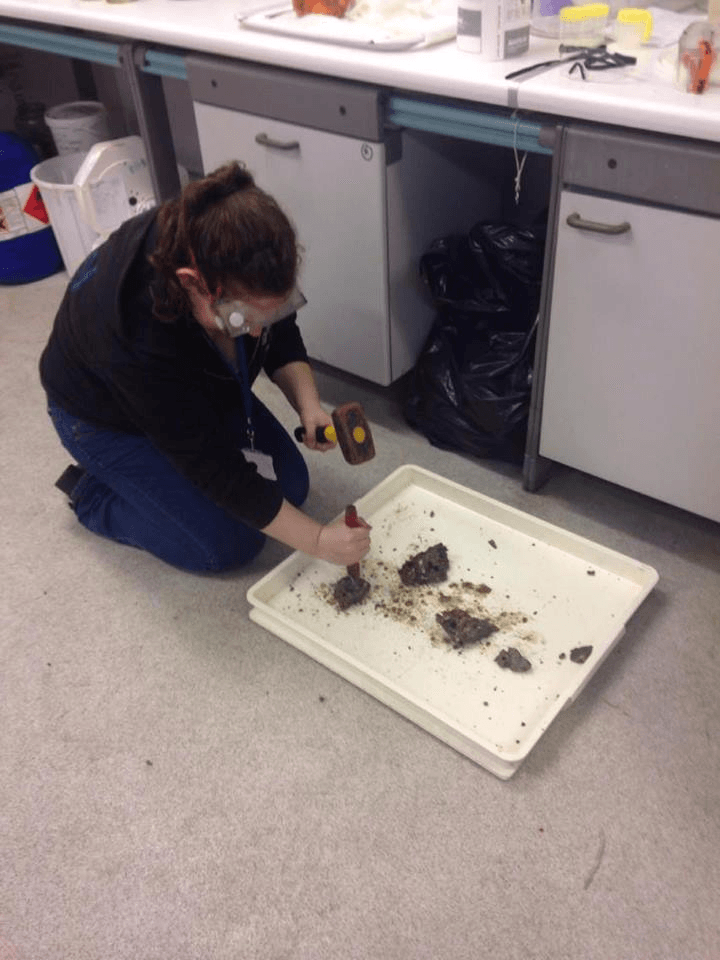Our visit to the Natural Sciences Department
, 2 March 2017

Scanning a rodent skull using the 3D scanner
Working on the collections in the Natural Sciences Department of the National Museum Wales can be both enlightening and complex. Visiting from Bangor University for a week in Cardiff, we were involved with work in the invertebrate biodiversity section, in particular with bivalves and polychaetes. We were very privileged to gain lots of laboratory skills during this process and undertook a huge variety of tasks!
Worm hunting
We were got down to business with sorting a benthic survey sample from 2013 into Polychaeta, Mollusca, Crustacea and Echinodermata by investigating samples under the microscope. To our amazement, we found a big diversity of species just within the samples we looked through, finding everything from bristle worms to isopods! Later in the week we also took on the challenge of trying to identify the polychaete species we found, with some kind help from Teresa. Whilst it was challenging at first, we all became much better by the end and even managed to identify some just by their tails! Teresa also kindly showed us how polychaetes are photographed for publication and identification guides, which was very interesting – it takes a lot of patience and is quite fiddly but the final results are incredible!
A Serpulidae worm that we liberated from its rock!
Ensis - razor clams - from the Mollusca collections
Our work with bivalves began by sorting a collection donated by CCW - Countryside Council for Wales (now Natural Resources Wales) - originally collected by Bangor University back in the 50’s, and inputting the collection details onto the museum's digital database. However, obstacles were met along the way: some sections contained more than one label indicating that more than one species were in the same container, as well as the same species all from different places! But Anna kindly trained us up so we were able to organise shells into the correct species groups and off we went! We sorted some beautiful shells, including razor clams! For some specimens, a light microscope was needed in order to see the most important features for identification. By using the British Bivalves online database, created by museum staff, we were able to ensure that the names of the shells were up to date.
While there we had an explore around the collection and came across some stunning shells, including a huge Triton shell, which is from a species of sea snail that preys on Crown-of-Thorns starfish! The mollusc collection at the museum contains lots of other shell bearing creatures such as limpets and snail-like shells, as well as books on molluscs dating all the way back to the 17th century that contain a wealth of knowledge, and are stored in a glass bookcase to protect them from the environment.
Chiselling rocks to find burrowing worms and bivalves
3D printing Scanning a rodent skull using the 3D scanner
Our adventures behind the scenes didn’t stop there! While working on the collections we were lucky enough to have a go at 3D printing, which is a mesmerising process to behold. In addition to the printing we witnessed how the fantastic images you see on display in the museum gallery and within books and papers from the staff are created. A fine art of patience and care creates beautiful imagery of amazing detail. Our time at the museum was spent just prior to Christmas allowing us to join the wonderful museum carol service, which was held in the main hall and made up of members of the museum staff, all with amazing voices. As for Cardiff, it was our first time in this vibrant city for all three of us; the foods in Cardiff market are amazing and some of the restaurants are a must go – and of course ice skating in front of the beautiful collection of buildings, one of which is the museum (we didn’t fall over either)!
The week we spent with the museum has given us an insight into how the amazing collections on display are put together, as well as gaining some hands-on science experience, and we will hopefully return again soon!
The printed result of the 3D scan!
Comments - (1)